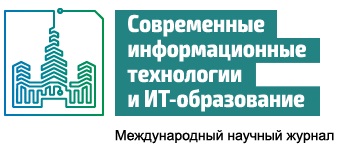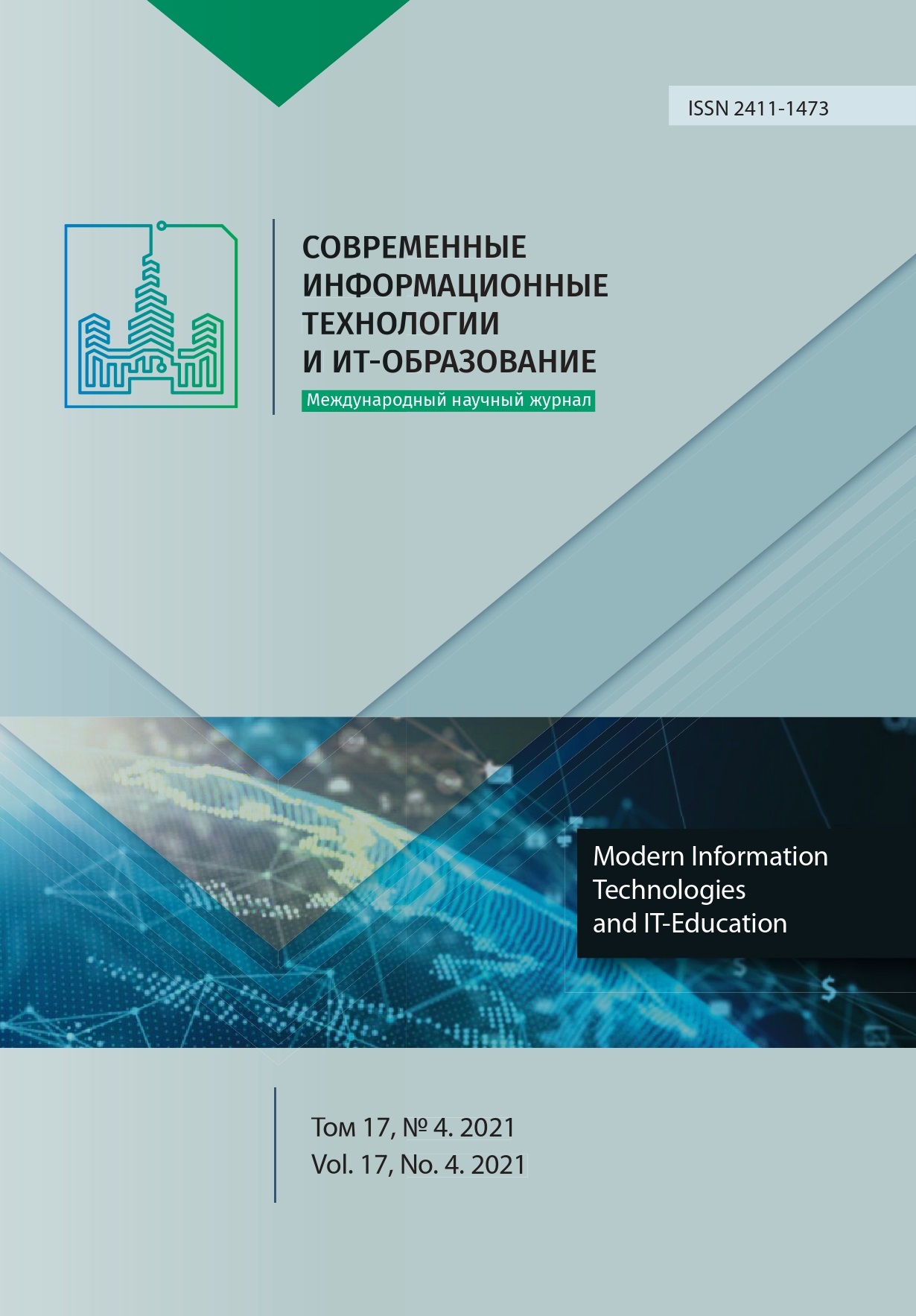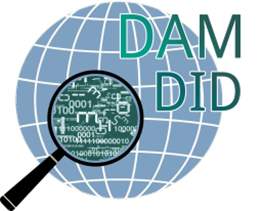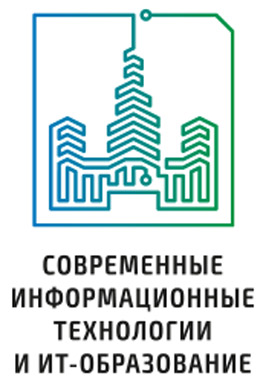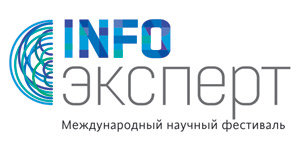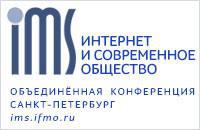Дистанционное обучение технологиям обеспечения сетевой безопасности на реальном оборудовании
Аннотация
Рассматриваются вопросы дистанционного обучения технологиям сетевой безопасности на реальном сетевом оборудовании. Рассматривается топология учебного класса, позволяющая дистанционное проведение лабораторных работ, использующих реальное сетевое оборудование.
Лабораторные работы проводятся с использованием межсетевых экранов D-Link DFL 860E, сертифицированных ФСТЭК. Лабораторные работы предполагают как настройку одного межсетевого экрана, так и согласованную настройку двух межсетевых экранов для создания VPN с использованием различных протоколов туннелирования. В классе существуют две параллельные сети. Первая сеть используется нами в лабораторных работах. Вторая сеть используется в учебном процессе на компьютерных курсах ВМК МГУ.
Для проведения дистанционных лабораторных работ подключение студентов и преподавателей к компьютерам класса организовано при помощи второй сети через специальный, дополнительно установленный компьютер-шлюз, соединенный с сетью Интернет.
Студенты со своих удаленных компьютеров устанавливают SSH-соединение с этим компьютером-шлюзом, и внутри этого соединения организуют туннель для протокола VNC. Далее работа с компьютерами класса осуществляется при помощи программного обеспечения TightVNC – клиент на стороне компьютера студента и сервер на стороне компьютера в классе.
Для этих целей на каждом компьютере класса установлен сервер TightVNC.
Как показал первый опыт дистанционного проведения лабораторных работ, студенты легко справляются с процедурой подключения к компьютерам класса, общий ход дистанционной работы близок к ходу очной работы и не требует дополнительного времени, имеются даже определенные незначительные преимущества данного способа проведения лабораторных работ, которые обсуждаются в статье. Сложности имеются в части дистанционного поддержания оборудования класса в рабочем режиме, что также обсуждаются в статье.
Литература
2. Barabash O., Sknarev D., Maslova I., Bereznyatskaya M., Prakhova A. Online education in new period of sustainable development after the pandemic. E3S Web of Conferences. 2021; 244:11053. (In Eng.) doi: https://doi.org/10.1051/e3sconf/202124411053
3. Belonovskaya I.D., Ilyasov D.F., Nevolina V.V., Drobot M.A., Repyakh L.P., Popova O. Trans-perspective technologies in the formation of the vocational and educational space of students. SHS Web of Conferences. 2021; 101:03050. (In Eng.) doi: https://doi.org/10.1051/shsconf/202110103050
4. Bangert K., et al. Remote practicals in the time of coronavirus, a multidisciplinary approach. International Journal of Mechanical Engineering Education. 2022; 50(2):219-239. (In Eng.) doi: https://doi.org/10.1177/0306419020958100
5. Evstatiev B.I., Hristova T.V. Adaptation of Electrical Engineering Education to the COVID-19 Situation: Method and Results. 2020 IEEE 26th International Symposium for Design and Technology in Electronic Packaging (SIITME). IEEE Press; 2020. p. 304-308. (In Eng.) doi: https://doi.org/10.1109/SIITME50350.2020.9292142
6. Shaytura S.V., Minitaeva A.M., Ordov K.V., Gospodinov S.G., Chulkov V.O. Review of Distance Learning Solutions Used during the COVID-19 Crisis. Proceedings of the 2020 6th International Conference on Social Science and Higher Education (ICSSHE 2020). Advances in Social Science, Education and Humanities Research. Vol. 505. Atlantis Press; 2020. p. 1-9. (In Eng.) doi: https://doi.org/10.2991/assehr.k.201214.001
7. Dvorakova Z., Kulachinskaya A. How the COVID-19 made universities switch to distance education: the Russian and Czech cases. Proceedings of the 2nd International Scientific Conference on Innovations in Digital Economy: SPBPU IDE-2020 (SPBPU IDE '20). Association for Computing Machinery, New York, NY, USA; 2020. Article number: 50. p. 1-7. (In Eng.) doi: https://doi.org/10.1145/3444465.3444490
8. Zhu J. Directly Hit the COVID-19: Research on Online Education under "Suspended Class, Ongoing Learning". 2020 The 4th International Conference on Education and E-Learning (ICEEL 2020). Association for Computing Machinery, New York, NY, USA; 2020. p. 214-219. (In Eng.) doi: https://doi.org/10.1145/3439147.3439186
9. Zhang X. Difficulties and Suggestions of Online Education Reform and Development under the Background of COVID-19 Prevention and Control. 2020 The 4th International Conference on Digital Technology in Education (ICDTE 2020). Association for Computing Machinery, New York, NY, USA; 2020. p. 71-76. (In Eng.) doi: https://doi.org/10.1145/3429630.3429641
10. Keyek-Franssen D. Praktiki uspeshnosti studentov: ot ochnogo obucheniya k masshtabnomu i obratno [Practices for Student Success: From Face-to-Face to At-Scale and Back]. Voprosy obrazovaniya = Educational Studies Moscow. 2018; (4):116-138. (In Eng.) doi: https://doi.org/10.17323/1814-9545-2018-4-116-138
11. Money W.H., Dean B.P. Incorporating student population differences for effective online education: A content-based review and integrative model. Computers & Education. 2019; 138:57-82. (In Eng.) doi: https://doi.org/10.1016/j.compedu.2019.03.013
12. Delic K.A., Riley J.A. Will post COVID-19 education be digital? Virtual round table featuring Peter Denning, Andrew Odlyzko, Espen Andersen, and Jeffrey Johnson. Ubiquity. 2020. Article number: 2. p. 1-8. (In Eng.) doi: https://doi.org/10
13. Garcia M., Quiroga J., Ortin F. An Infrastructure to Deliver Synchronous Remote Programming Labs. IEEE Transactions on Learning Technologies. 2021; 14(2):161-172. (In Eng.) doi: https://doi.org/10.1109/TLT.2021.3063298
14. López-Pimentel J.C., Medina-Santiago A., Alcaraz-Rivera M., Del-Valle-Soto C. Sustainable Project-Based Learning Methodology Adaptable to Technological Advances for Web Programming. Sustainability. 2021; 13(15):8482. (In Eng.) doi: https://doi.org/10.3390/su13158482
15. Yang S., Dong H., Li Z., Xi L. Design of Simulation Training System for Communication Network. 2020 International Conference on Computer Network, Electronic and Automation (ICCNEA). IEEE Press; 2020. p. 249-253. (In Eng.) doi: https://doi.org/10.1109/ICCNEA50255.2020.00058
16. Savochkin A., Abdulgaziev O., Koptsev P. Remote mode for performing laboratory work on the study of network control tools. Proceedings of IX All-Russian Science-Practical Conference on Recent Achievements and Prospects of Innovations and Technologies. KSMTU, Kerch; 2020. p. 184-189. Available at: https://www.elibrary.ru/item.asp?id=43113080 (accessed 24.07.2021). (In Eng.)
17. Savochkin A., Abdulgaziev O., Koptsev P. Distance learning organizations for IP telephony basics. Proceedings of IX All-Russian Science-Practical Conference on Recent Achievements and Prospects of Innovations and Technologies. KSMTU, Kerch; 2020. p. 173-177. Available at: https://www.elibrary.ru/item.asp?id=43113077 (accessed 24.07.2021). (In Eng.)
18. Di J. Development of Distance Teaching System for College Professional Courses Based on 5G Network. IOP Conference Series: Materials Science and Engineering. 2020; 750:012138. (In Eng.) doi: https://doi.org/10.1088/1757-899X/750/1/012138
19. Smajic H., Duspara T. Education 4.0: An Remote Approach for Training of Intelligent Automation and Robotic During COVID19. TH Wildau Engineering and Natural Sciences Proceedings. 2021; 1:265-272. (In Eng.) doi: https://doi.org/10.52825/thwildauensp.v1i.21
20. Smajic H., Sanli A., Wessel N. Education 4.0: Remote Learning and Experimenting in Laboratory for Automation. In: Auer M.E., Centea D. (eds.) Visions and Concepts for Education 4.0. ICBL 2020. Advances in Intelligent Systems and Computing. 2021; 1314:49-55. Springer, Cham. (In Eng.) doi: https://doi.org/10.1007/978-3-030-67209-6_6
21. Gouriev D.E. The Experience of Distant Execution of Practical Training on Construction of Internet Network Segment. Sovremennye informacionnye tehnologii i IT-obrazovanie = Modern Information Technologies and IT-Education. 2020; 16(4):951-960. (In Russ., abstract in Eng.) doi: https://doi.org/10.25559/SITITO.16.202004.951-960
22. Wang C.-H., Shannon D.M., Ross M.E. Students’ characteristics, self-regulated learning, technology self-efficacy, and course outcomes in online learning. Distance Education. 2013; 34(3):302-323. (In Eng.) doi: https://doi.org/10.1080/01587919.2013.835779
23. Barrett D.J, Silverman R.E., Byrnes R.G. SSH, The Secure Shell: The Definitive Guide. 2nd ed. O'Reilly Media, Inc.; 2005. 670 p. (In Eng.)
24. Ylönen T. SSH ‒ Secure Login Connections over the Internet. Proceedings of the Sixth USENIX Security Symposium. USENIX Association, San Jose, California; 1996. p. 37-42. Available at: https://www.usenix.org/conference/6th-usenix-security-symposium/ssh-secure-login-connections-over-internet (accessed 24.07.2021). (In Eng.)
25. Richardson T., Stafford-Fraser Q., Wood K.R., Hopper A. Virtual Network Computing. IEEE Internet Computing. 1998; 2(1):33-38. (In Eng.) doi: https://doi.org/10.1109/4236.656066

Это произведение доступно по лицензии Creative Commons «Attribution» («Атрибуция») 4.0 Всемирная.
Редакционная политика журнала основывается на традиционных этических принципах российской научной периодики и строится с учетом этических норм работы редакторов и издателей, закрепленных в Кодексе поведения и руководящих принципах наилучшей практики для редактора журнала (Code of Conduct and Best Practice Guidelines for Journal Editors) и Кодексе поведения для издателя журнала (Code of Conduct for Journal Publishers), разработанных Комитетом по публикационной этике - Committee on Publication Ethics (COPE). В процессе издательской деятельности редколлегия журнала руководствуется международными правилами охраны авторского права, нормами действующего законодательства РФ, международными издательскими стандартами и обязательной ссылке на первоисточник.
Журнал позволяет авторам сохранять авторское право без ограничений. Журнал позволяет авторам сохранить права на публикацию без ограничений.
Издательская политика в области авторского права и архивирования определяются «зеленым цветом» в базе данных SHERPA/RoMEO.
Все статьи распространяются на условиях лицензии Creative Commons «Attribution» («Атрибуция») 4.0 Всемирная, которая позволяет другим использовать, распространять, дополнять эту работу с обязательной ссылкой на оригинальную работу и публикацию в этом журналe.
